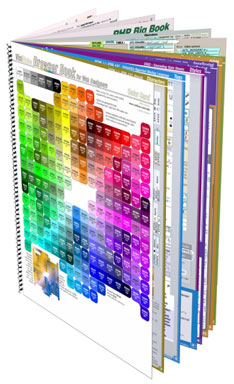Five people attended the October meeting of the Central NH Linux User Group, an affiliated chapter of the Greater New Hampshire Linux User Group. We met at the NHTI Library, Room 146.
We had an attendee with a tech support question we weren’t able to answer on the spot, but gave him some resources to pursue. He was plugging his camera into his Ubuntu machine, and he wanted to set the mount point to be a fixed mount point rather that something dynamically created by dbus. He made some changes, but wasn’t sure of exactly what he had changed, and the device no longer appears when he plugs it in. It does appear on other machines, Linux Mint and Windows, so the device is unlikely to be broken. No one present was sure where the settings might be stored for this. We suggested joining the gnhlug-discuss list as well as the support forums provided by Ubuntu Linux. I look forward to some of our experts helping our friend out.
I let folks know that I’ve reserved the room for November and December. After that, we’ll likely start meeting with the ManchLUG group, unless someone else wants to keep running meetings in Concord. We reviewed the GNHLUG wiki for upcoming meetings. Especially noted were the upcoming DLSLUG meeting “About Lisp -or- Lambda, the Ultimate Lecture, presented by Yoni Rabkin” and the New Hampshire High Tech Council‘s TechWorld 2010 conference ($25 – $210) coming up next Thursday and Friday. We discussed the idea that a nicer-looking forum software, like Drupal, would be nice to implement on the GNHLUG site, and talked about the past efforts to do that, and some of the challenged past projects have run into.
We mentioned that there’s a effort to create a community-driven site to support and distribute a new fork to OpenOffice.org named LibreOffice. Some of the other projects involved in the MySQL – Sun – Oracle mergers have been making interesting news as well.
Thanks to Dave Rose for providing the projector. We used a Live USB version of Fedora 14 beta which shipped last week and saw a pretty remarkable “It Just Works” effect: plugging in the running ThinkPad (a T61, 1680×1050, with an nVidia controller), the open source nouveau driver recognized the Sharp projector and automatically reconfigured the display (1400×1050) for side-by-side (“twinview”) layout with the internal screen. No xrandr, no rebooting of the machine! Wow. We brought up the Gnome display properties dialog and moved them around and finally settled on a mirrored display for the main presentation. This is a huge time saver and convenience for doing presentations!
Our main presentation was a viewing of the documentary, “Patent Absurdity, How software patents broke the system” and a discussion afterwards on what you can do (contact your Congress-person, contribute to organizations, etc.). Everyone learned something from the show, and perhaps from the discussion afterwards.
Thanks to all for attending to Dave for providing the projector, and to NHTI for providing the facilities!
